FEATURE Satellite data uncovers health decline in 25 percent of Sundarbans mangroves

BANGLADESH – While the Sundarbans forest in India and Bangladesh is resilient to cyclone events, the long-term degrading effects of climate change could critically hamper its ability to spring back, a satellite data-based study of the world’s contiguous mangrove system has said. “What we are seeing in the study is that the number of mangroves (in the entire Sundarbans) hasn’t reduced significantly in the last 30 years. However, there is evidence of a decline in the health of about 25 percent of the mangrove trees,” said study author Katie Awty-Carroll of Department of Geography and Earth Sciences, Aberystwyth University, Wales. And those areas will be more exposed to harm in the future, especially if extreme events such as cyclones become more common, Awty-Carroll said. Awty-Carroll and colleagues tapped into a 30-year time series of Landsat data (January 1988 to June 2018) covering the entire Sundarbans. The Landsat program (by NASA and USGS) offers the longest continuous space-based record of the Earth’s surface. The Sundarbans forest spans the delta formed by the confluence of the Ganges, Brahmaputra and Meghna river systems. The 10,000 square kilometre region stretches along the coast of Bangladesh (where 60 percent of the forest lies) and India. READ MORE GLOBAL Threat to biodiversity risks a flood of economic ruin

WORLD ECONOMIC FORUM REPORT – Mangroves are trees that grow miraculously on seawater, fringing some of the tropical shores of our planet. They shelter a wealth of wildlife, protecting more than 3,000 fish species, many of which are of commercial importance. Mangrove trees can sequester up to ten times as much of our carbon pollution per hectare as rainforests, making them an important player in limiting the impacts of climate change. Mangrove roots also help anchor shorelines around the world, protecting coasts from the devastating impacts of storm waves – much more effectively than concrete sea walls. Despite all these benefits, mangroves tend to be undervalued. The explosive growth of shrimp farming, urban expansion, climate change and other aspects of economic development reduced mangrove forests by as much as 35% between 1980 and 2000. 11 of some 70 mangrove species are at risk of becoming extinct.Mangroves and the rest of the natural world offer value to humanity at no cost. Every year, the environment provides about $125 trillion in free services, for example pollination, water filtration, oxygen production and flood protection. This is worth more than the entire global GDP. READ MORE AFRICA How the 'Venice of Africa' is losing its battle against the rising ocean
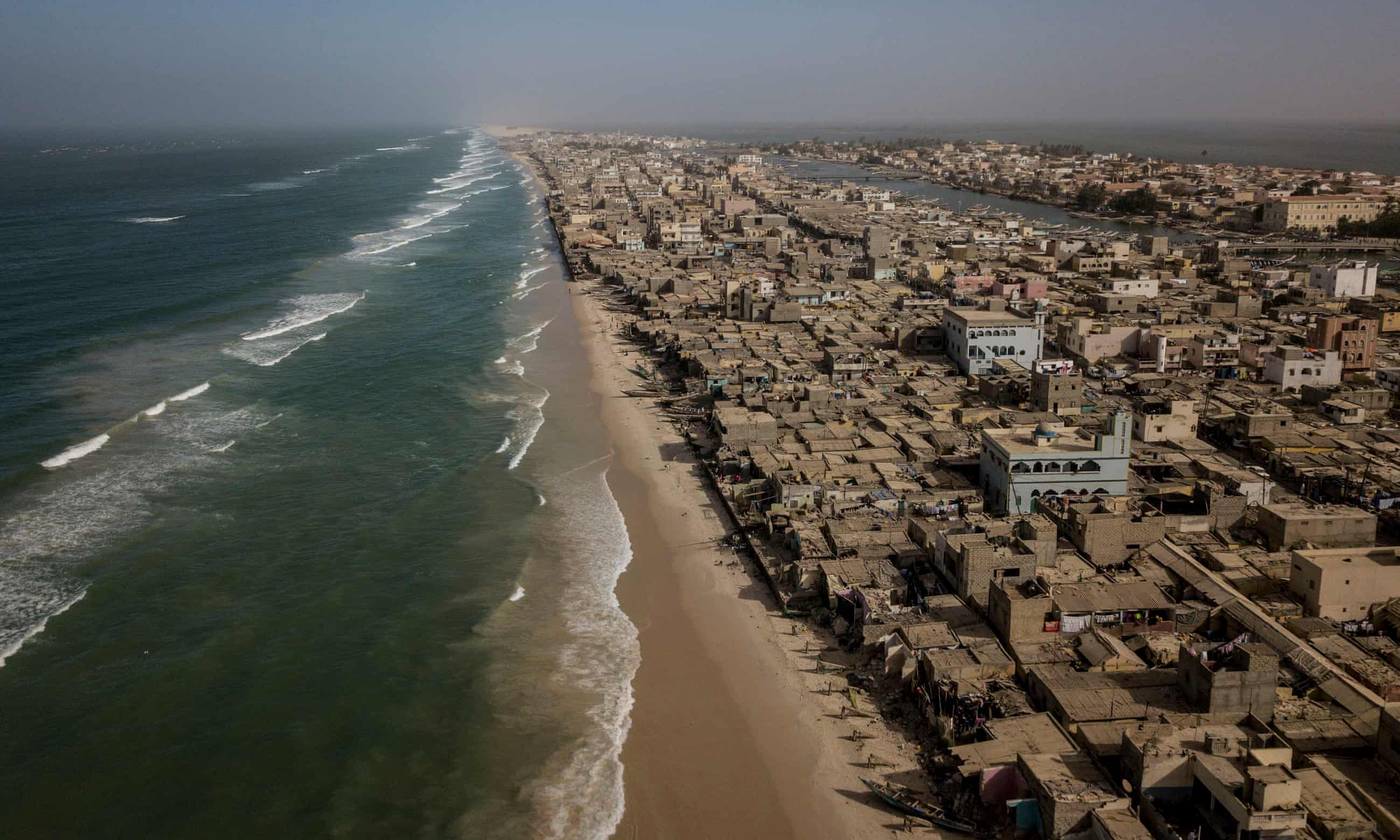
SENEGAL – Ameth Diagne points to a single tree submerged in the ocean. It is barely visible from the patch of land where he is standing, 50 meters away. The few branches emerging from the water mark the place where he proposed to his wife 35 years earlier. It used to be the town square of Doun Baba Dieye, a vibrant fishing community on the outskirts of Saint-Louis in northern Senegal. The village has been wiped off the map, with only the tree and crumbling walls of an abandoned school remaining as testament to its existence. Everything else is 1.5 metres under water. Ameth Sene Diagne, former village chief of Doune Baba Dieye, with the tree where he proposed to his wife in the background now under water. “This was home. I was born here. Everything which was important to me happened here,” says Ameth, the former village chief. Doun Baba Dieye is in the southern part of Langue de Barbarie, a thin, sandy strip of land protecting Saint-Louis, former colonial capital of Senegal, from the ocean. Saint-Louis, a city of 230,000 and a Unesco world heritage site, is nestled between the mouth of the Senegal river and the Atlantic. READ MORE AMERICAS ‘It makes your heart bleed’: Protected mangroves slashed in Volusia County

USA – Around 500 mangroves in Volusia County were cut well below the height mandated by state guidelines, forcing the state to get involved to figure out how and why it happened State law says that trees can not be trimmed to under 6 feet, but some 500 trees in Wilbur-By-The-Sea were slashed far below that on New Year’s Eve The Wilbur-By-The-Sea board president said the board gave a homeowner permission to trim the trees, but only if he hired an arborist and followed state law. The president said when he drove by and saw what had been done, he was shocked and heartbroken “Oh my goodness, it makes your heart bleed because we watched them grow since we were young,” said Wilbur-By-The-Sea resident Charles Pruitt Neighbors said it’s already disrupted the ecosystem, displacing animals and destroying the privacy the mangroves provided SB Tree Service, which did the work, said the homeowner who hired them said everything was taken care of. Now, the state is getting involved and warning those responsible could face serious fines According to the state, there can be up to a $250 fine for any mangrove being illegally altered. READ MORE Mangrove nursery to be established at HLSCC
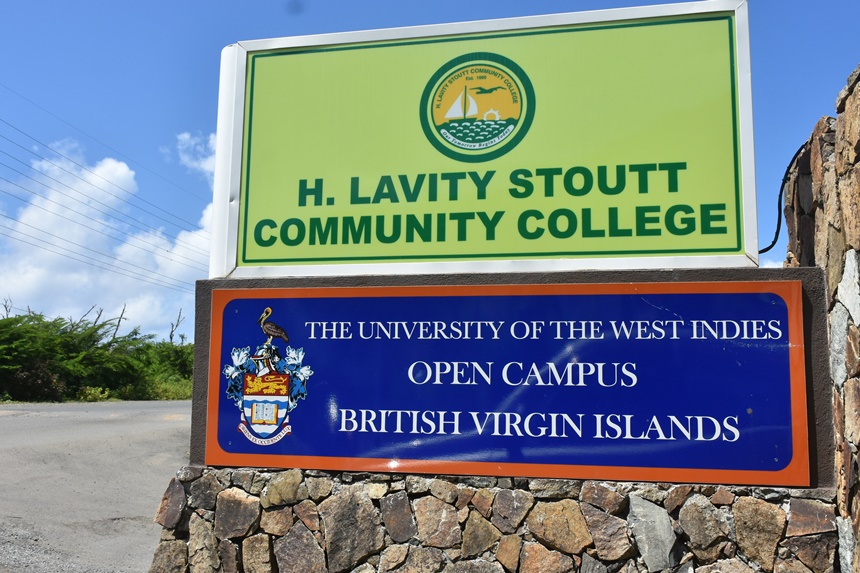
BRITISH VIRGIN ISLANDS – Government and Unite BVI has signed a grant agreement with H Lavity Stoutt Community College (HLSCC) which will see a mangrove nursery being established on their Paraquita Bay campus. Minister for Natural Resources Vincent Wheatley said the agreement was important particularly because as mangroves are essential to the territory’s ecosystem. “Apart from being able to replace the damaged mangroves that were damaged in the hurricanes of 2017, should we have another occurrence of a hurricane, we will replace those mangroves at a faster rate in the future,” Wheatley said. Minister Wheatley added that while mangroves are known to protect the territory’ shores, they also provide a nursery for fish and other marine life. Initiative will help the BVI become more resilient Sharing similar sentiments to Minister Wheatley was Research Consultant, Dr Lianna Jarecki who said the initiative can help to transition the British Virgin Islands into being more resilient to the effects of climate change. She said: “The damage to mangroves has been apparent since the hurricanes, but we have experienced a lot of wetland replacement long before that and because of that, we have flooding and erosion issues that we know mangroves are good at mitigating against.” READ MORE Exploring the Secrets of the Mangroves

USA – The 2020 Marco Speaker Series presented by the Audubon of the Western Everglades (AWE) was held at Mackle Park on Wednesday, January 8th, 2020. It was led by biologist Ryan Young on Florida’s Mangroves and their Importance in the Environment. Ryan Young knows all about mangroves. He is an avid outdoorsman and founder of Rising Tide Explorers. He is a biologist and Rising Tide is Marco Island’s only 100% biologist owned and operated adventure company. They are also the exclusive eco-tour provider for Rookery Bay National Estuarine Research with kayak tours rentals and boat tours. Marco Island is surrounded by one of the most unique ecosystems on the planet. Young wants to communicate the science of the estuaries and the magic of the mangroves to his clients. According to Young, we are so lucky in Marco because of what’s in our backyard. Marco Island is in the middle of the Rookery Bay Preserve and we are surrounded by mangrove forests and estuaries. An estuary is where two chemically different bodies of water are mixed together. Or where saltwater meets freshwater. Within the Rookery Bay Reserve, we have salt marshes, mangroves, oyster reefs and seagrasses. READ MORE ASIA Cyclone shield: Breathing new life into Myanmar's mangroves
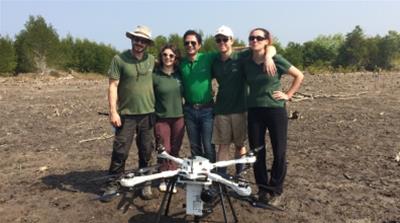
MYANMAR – Since 1978, one million hectares of mangroves have been cut down in Myanmar. In the Ayerwaddy Delta in the south, mangrove forests have been significantly depleted – often cut down to make way for shrimp and rice farming, as well as charcoal production and collecting palm oil. Worldwide, 35 percent of the world's mangroves are now lost. Only 16 percent of the original cover is left in the vulnerable Delta Region where the mangroves are being destroyed at rates three to five times higher than global deforestation. "At the moment, mangrove conditions are severely degraded," says Win Meung, a seasoned ecologist who heads a mangrove regeneration project in Myanmar. The BioCarbon Engineering team and their double propeller quadro-copter drone they hope will mean a brighter future for Myanmar's depleted mangroves [Ivan Ogilvie/ Al Jazeera "In the coastal areas, 60 percent of the villagers don't have a permanent job and try to find their money in the mangrove areas. They cut the trees and within one hour they can get the money [they need] for their livelihood." READ MORE Most of 11m trees planted in Turkish project 'may be dead'

TURKEY – Up to 90% of the millions of saplings planted in Turkey as part of a record-breaking mass planting project may have died after just a few months, according to the country’s agriculture and forestry trade union. On 11 November last year, which the government declared National Forestation Day, 11 million trees were planted by volunteers in more than 2,000 sites across the country, including by the Turkish president, Recep Tayyip Erdoğan, and the parliament Speaker, Mustafa Şentop. The government-backed programme broke the world record for the most trees planted in one hour in a single location, with 303,150 saplings planted in the northern Anatolian city of Çorum. The head of the union claimed, however, that 90% of the saplings his teams have inspected so far have died because of insufficient water. Speaking to the Guardian, Şükrü Durmuş attributed the deaths to the saplings being planted at “the wrong time” and “not by experts”, as well as a lack of rainfall. READ MORE Abu Dhabi's Mangrove Walk is now open to the public

ABU DHABI – The much-anticipated Mangrove Walk on Al Jubail Island in Abu Dhabi opened recently. A project by Modon Properties, the 1 million-square-metre area is full with mangroves that spread out on either side of a winding boardwalk. The Qurum Walkway is open to visitors daily from 8am to 6.30pm, and is free to visit at the moment. The visitors' centre includes a coffee shop and washrooms. Guests can then head out to the boardwalk, which has three routes. The longest is 2 kilometres and the shortest is 1km. A casual stroll through the longest route takes between 35 and 40 minutes. Birds, fish and crabs are among the wildlife. The water is clear, giving unblocked views of mangrove roots and marine life, and rangers are on hand to provide more information about the park and its flora and fauna. “It’s all about nature first,” says a ranger. He says no littering, fishing or eating is allowed. The park closes by 6.30pm so the wildlife will not be not disturbed by human lighting. The best time to visit is during high tide, the ranger says. READ MORE Maldives: Protect Mangroves From Further Loss
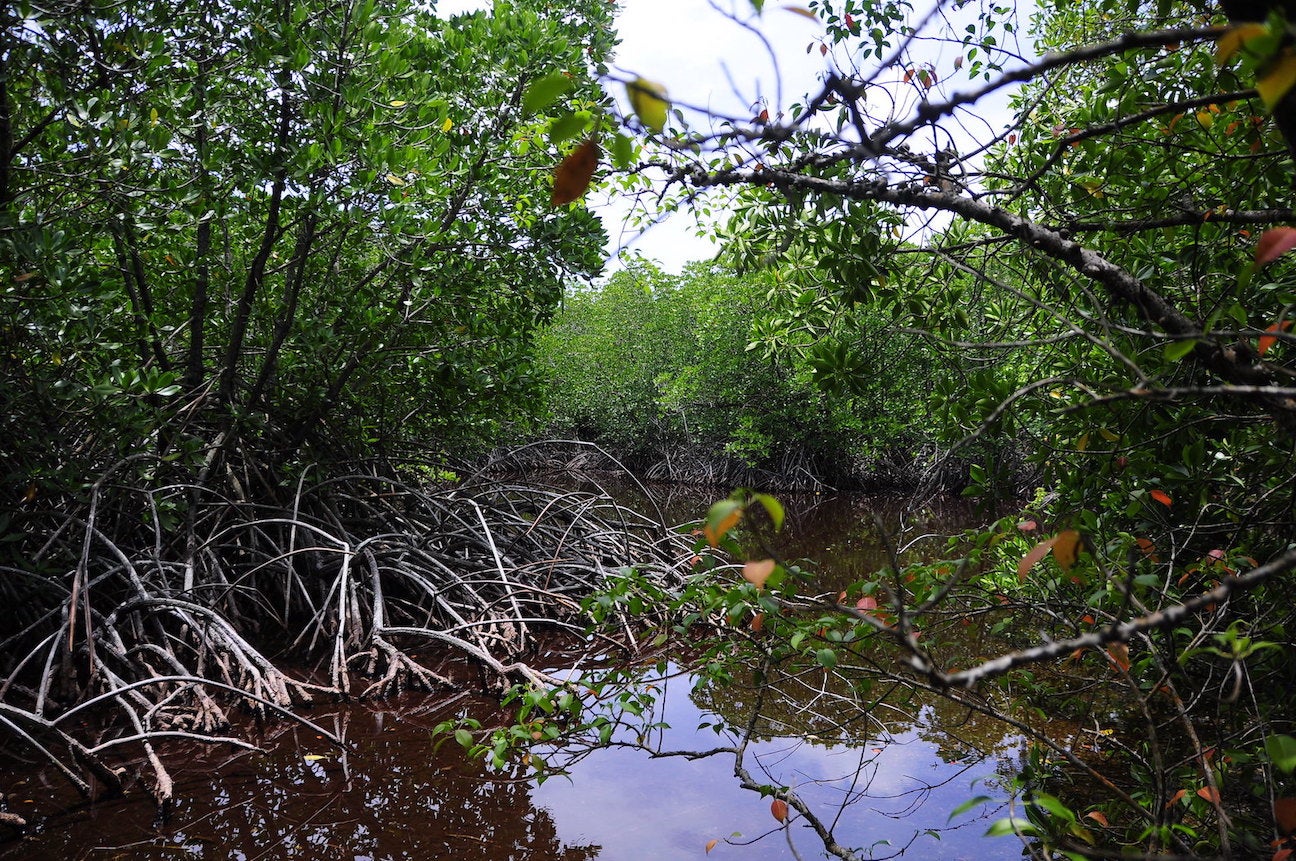
MALDIVES – The Maldives government should preserve a mangrove forest that helps protect local residents against increased risks from flooding and coastal erosion, Human Rights Watch said today. A large portion of the mangrove forest on the northern island of Kulhudhuffushi was previously destroyed to build an airport, and authorities are now considering plans to reclaim the remaining area for development after the island was upgraded to city status. “The Maldives government will be putting more islanders at risk of their lives and livelihoods from flooding if they destroy more mangroves,” said Patricia Gossman, associate Asia director. “The Maldives are already at serious risk from the effects of climate change, and the authorities should be taking urgent steps to protect island communities facing further harm.” The Maldives are one of the most vulnerable countries on earth to climate change, with the projected global sea-level rise potentially inundating many of its approximately 1,200 islands. With flooding, erosion, and other ecological disasters on the rise, mangrove forests and coral reefs are one of the Maldives’ most important natural protections against these extreme weather events. READ MORE OCEANA Abandoned 100-Year-Old Shipwreck in Australia Is Reclaimed by Nature
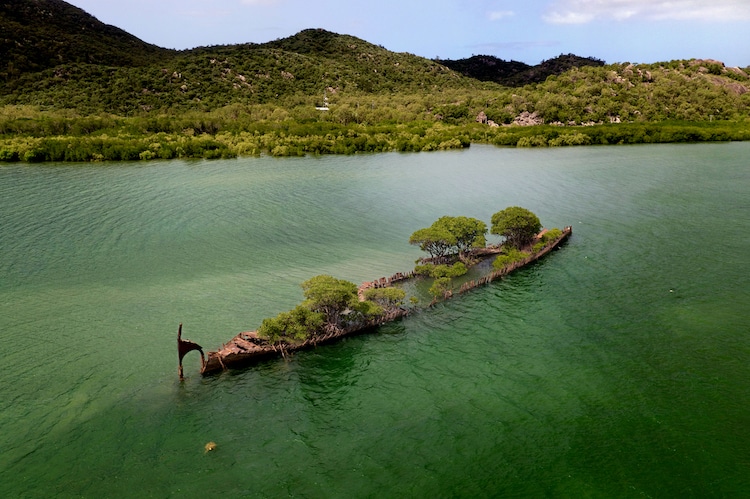
AUSTRALIA – Off the shores of Australia, a 19th-century steamship sits in the sea, overrun by mangrove trees. What now looks like a carefully crafted art installation is actually the remains of the SS City of Adelaide, which sailed the seas for over 50 years before running aground. Located in Cockle Bay, Magnetic Island, the ship’s history underwater is just as, if not more, fascinating as its time at sea. Launched in 1863 from Glasgow, Scotland, the SS City of Adelaide originally shuttled passengers between destinations like Sydney, Melbourne, and Honolulu. After nearly 30 years, the ship was refitted and transformed into a sailing vessel. That’s when the problems started. First, the boat switched from ferrying passengers to storing coal and other cargo. In 1912, it caught fire and burned for several days before the flames were extinguished. READ MORE
Like this newsletter?
Pease consider donating to MAP to keep it going.
Giving could never be easier | ACTION ALERTS Enough! Pledging zero tolerance to attacks against environmental and human rights defenders. SIGN THE PETITION Stop plundering the oceans for industrial aquaculture! SIGN THE PETITION PETITION – NO new coal power – protect local people and wildlife!
SIGN OUR PETITION PETITION – Help stop the advance of oil palm plantations in Gabon!
SIGN THE PETITION PETITION – Don't trash coral reefs for the cruise industry! – TAKE ACTION PETITION – Sea turtles or condominiums?
Sand mining and construction work would wipe out a marine biodiversity hotspot and destroy the livelihoods of local people, who have not been consulted. Please SIGN! PETITION – Save Penang! Reject the 3-Islands Reclamation!
The lack of public consultation and detailed information about the project is shocking in view of the size of proposed reclamation which is 4,500 acres or 7 square miles
PLEASE SIGN
PETITION – Save Pulau Kukup National Park – second largest mangrove island in the world. Sign The Petition Like this newsletter? Pease consider donating to MAP to keep it going. Giving could never be easier 
69 million tons of carbon stored thanks to mangrove restoration, as demonstrated by the new Mangrove Restoration Map VIEW MAP HERE 
Restoring The Natural Mangrove Forest
Watch movie 
Community Based Ecological Mangrove Restoration in Rufiji Delta VIEW VIDEO Video: Mangroves for the Future – A look bacK. As the latest phase of Mangroves for the Future (MFF) draws to a close, this video highlights some of the project’s most successful initiatives – from local women supporting national park management in Viet Nam to an island in the Maldives that has become a model for waste management, and everything in between. View Here WANT TO GET INVOLVED?
Follow and Join MAP!
   
Like this newsletter? Pease consider donating to MAP to keep it going. Giving could never be easier 

VOLUNTEER OPPORTUNITY 
MANGROVE ISSUES Want to learn more about mangroves?
Our short presentation will give you a better understanding of the issues we are working to solve. WATCH PRESENTATION What is CBEMR? Easy to follow fact sheet – CLICK HERE What is EPIC? – The Ecosystems Protecting Infrastructure and Communities (EPIC) project: the role of ecosystems as protective barriers against climate induced hazards MANGROVES APP AVAILABLE
A pictorial field guide for easy identification of various mangrove species and learning about the mangroves ecosystem. CLICK HERE View MAP’s uploaded Videos at MAPmangrover’sChannel
Question Your Shrimp Consumer/Markets Campaign!
WATCH VIDEO Mangrove Restoration in Asia – Watch Short Video The Value of Mangrove Forests View Video CBEMR Experience Exchange MAP 2017 English Subtitles
VIEW THE VIDEO Mangroves: Guidebook to Malaysia – Click Here
Mangrove rehabilitation in Asia – Local Action and cross-border Transfer of Knowledge for the Conservation of Climate, Forests and Biodiversity VIEW VIDEOS HERE SHARE MAP'S VISION
CLICK HERE to watch short introductory video. Together we can work "at the roots of the sea". Our short documentary, Reducing the Risk of Disaster through Nature-Based Solutions : Mangroves

Exclusive Interview with Alfredo Quarto, Co-Founder and Executive Director of Mangrove Action Project – See more
Marvellous Mangroves Curriculum The Marvellous Mangroves Education Forum is an online hub for those utilizing the Marvellous Mangroves (MM) Curriculum. It gives students, teachers and anyone interested in mangroves, the opportunity to learn and share ideas themed around the curriculum, to connect and communicate with others around the globe whilst exploring mangroves from your computer or on the go. VISIT 
The award-winning Marvellous Mangroves (MM) curriculum educates children on the importance of mangroves and their ecological functions, teaching them about modern challenges and mechanisms for sustainability. VIEW VIDEO Marvellous Mangroves Curriculum in Bangladesh – WATCH VIDEO
MARVELLOUS MANGROVES IN BRAZIL
En Portuges 
Marvellous Mangroves – A Curriculum-Based Teachers Guide. FOR MORE ON MAPs AWARD WINNING CHINA MANGROVE CURRICULUM VISIT

VIMEO SHOW
VISIT OUR "MM" WEBPAGE Check out our presentation for more details on Marvellous Mangroves Read this 10 page history of the development of MAP’s educational curriculum VIEW DOCUMENT
Article in Canada's Green Teacher Magazine – Read More
Like this newsletter? Pease consider donating to MAP to keep it going. Giving could never be easier 
Green Planet Fundraising Assists MAP – LEARN MORE
Volunteer Opportunities with Mangrove Action Project CLICK HERE
"Question Your Shrimp" Campaign Question Your Shrimp- Don't Buy or Sell Imported Tropical Shrimp! Sign the Petition Learn more about the affects of the shrimp industry on mangroves by visiting our blog
Editor’s Note: Mangrove Action Project’s Executive Director, Alfredo Quarto was interviewed about shrimp by Green Acre Radio’s Martha Baskin
LISTEN TO INTERVIEW Sign the Consumer's Pledge to avoid imported shrimp
Not yet a MAP News subscriber?
Click here to subscribe. Note to Our Readers: We strive to keep active links in our newsletter. However, due to circumstances beyond our control, occasionally links to stories may become broken. If you find a link to a story is not functioning, please cut and paste the headline into your browser search bar. In most cases you should be able to locate the original story.
|


























